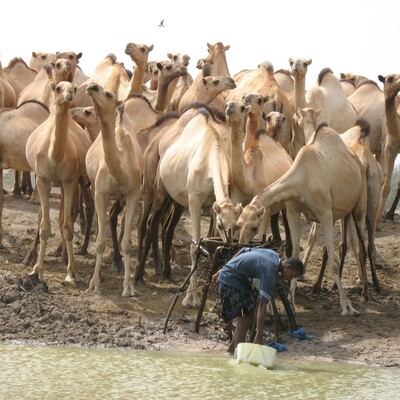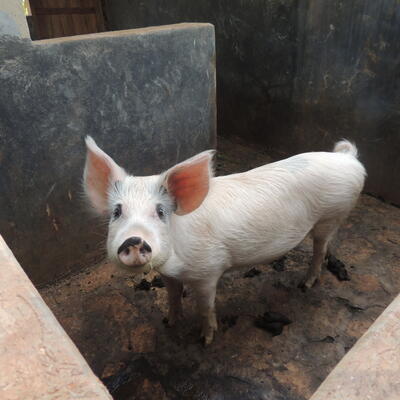
New study sheds light on the Brucella species circulating in Kenya
Research has revealed that B. abortus and B. melitensis are the dominant Brucella species circulating in several livestock hosts and humans in Kenya. Both B. abortus and B. melitensis were detected in cattle, sheep, goats, camels and humans.
Brucellosis is a disease caused by a group of bacteria from the genus Brucella. These bacteria can infect both humans and animals. Brucellosis is often spread when people eat raw contaminated animal products, particularly milk, and through contact with fluids of infected animals when they help them give birth, as well as contact with aborted materials or placenta.
A team of researchers from the International Livestock Research Institute (ILRI) and partners, conducted a study in the pastoral areas of Narok and Marsabit counties in Kenya where high numbers of livestock are kept in close contact with humans in pastoralist systems. Serum samples were collected from 228 cattle, 162 goats, 158 sheep, 49 camels and 257 humans from the two counties. Information on age, location and history of abortion or retained placenta were obtained for sampled livestock. Data on age, gender and location of residence were also collected for human participants.
The study, whose results are published in Scientific Reports, established associations between Brucella species and the different vulnerable hosts and found evidence of possible cross transmission of Brucella species in areas where close interaction between different animals occurs. Congregation of different animal species around communal watering points, keeping of mixed herds, and sharing of grazing sites increases the chances of cross-transmission of Brucella spp.
Brucella abortus is most common in cattle and camels, while infection in sheep and goats was mainly associated with B. melitensis. Humans are exposed to both B. abortus and B. melitensis, suggesting that cattle, sheep, goats and camels could be playing a role in the zoonotic transmission. The study also revealed that camels were more likely to test positive for Brucella than other animals due to the high frequencies of migration that enhance the sharing of grazing areas and watering points.
The authors also noted that, in the two counties, individuals aged 21-40 years are more likely to test positive for Brucella due to their primary responsibility of herding, milking, and helping animals give birth. This predisposes them to exposure compared to those below 21 years.
The results of this study will enable animal and human health experts to better understand the epidemiology of brucellosis and develop targeted control programs for the disease. The detection of the two zoonotic Brucella species in humans and animals highlights the importance of One Health prevention strategies that target multiple host species, especially in the multi-host livestock populations.
The study was carried out by a team of scientists from Afrique One-ASPIRE, Maseno University, University of Embu, Sokoine University of Agriculture, University of Liverpool, Centre Suisse de Recherches Scientifiques, Nelson Mandela African Institute of Science and Technology, Vétérinaires Sans Frontières Suisse, University of Glasgow and ILRI.
The work was also funded by the United States Defence Threat Reduction Agency (DTRA) through the ILRI led project ‘Co-infection with Rift Valley fever virus, Brucella spp. and Coxiella burnetii in humans and animals in Kenya: Disease burden and ecological factors,’. The content of the information does not necessarily reflect the position or the policy of the federal government and no official endorsement should be inferred.
Download the article Molecular epidemiology of Brucella species in mixed livestock-human ecosystems in Kenya


















